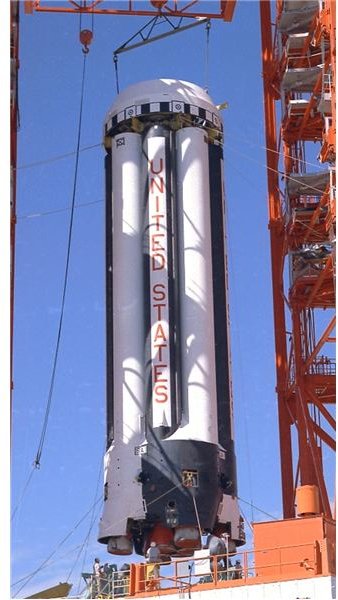The Apollo Space Program - The First Chariot--the Saturn 1/1B
Erector Set Rockets and New Technology
As America continued to chafe from the Soviet’s expanding space feats, Congress asked a fledgling NASA to develop a heavy launch vehicle to match the Soviet’s lifting capacity. They wanted a 1.5 million pound thrust rocket, and they wanted it quickly.
NASA officials turned to the team that had put our first satellite into orbit with a two month lead time, and since had orbited other heavier payloads with their Juno launch vehicle, based on the Army’s Jupiter IRBM—the Werner von Braun team at Marshall Spaceflight Center in Huntsville, AL. There was no existing military vehicle powerful enough to base such a booster on. Von Braun would have to design a new rocket. But the time constraints did not give him time to design and develop a completely new vehicle. He would have to use existing hardware and equipment.
The team already had a design in hand, developed under an Advanced Research Projects Agency (ARPA) contract. This contract was handed over to NASA. This would be the vehicle to test Apollo in Earth orbit.
The design used a Jupiter tank as a central structure. It was surrounded by eight lengthened Redstone tanks. The center tank and
four of the Redstone tanks held LOX (Liquid Oxygen). The other four tanks held RP-1—very high grade kerosene. These would be mounted on a square thrust plate, and feed eight uprated Jupiter engines, each generating 188,000 pounds of thrust. For the new vehicle, these engines were given the new designation as H1s. The four outboard engines were gimbaled for steering.
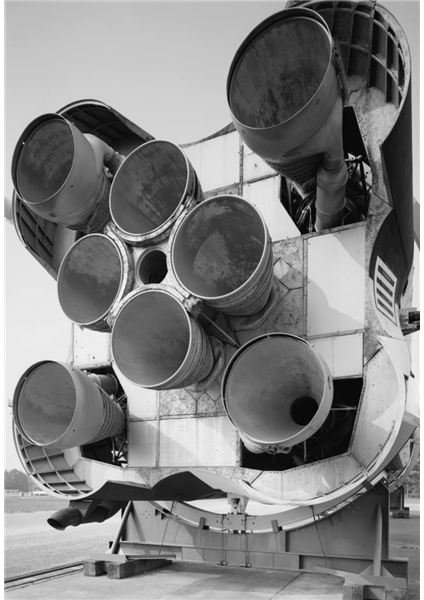
This new booster would be bigger than anything that had been used up to that time. It would be 81 feet tall and 22 feet in diameter.
For the second stage, von Braun’s team turned to a new technology, being proven with the Atlas/Centaur vehicle—liquid hydrogen—LH2.
A rocket’s velocity is determined by two major factors—its mass ratio (MR) and the exhaust velocity of its propellants. Mass ratio is the difference in the mass of the rocket fully fueled, and its’ mass when all the fuel and empty mass is discarded. That is why all space rockets are multi staged. As the lower stages are discarded, the mass ratio goes up.
The exhaust velocity of various propellant combinations varies widely. The LOX/RP-1 combination produces an exhaust velocity of about 7400 mph. LOX/LH2 produces an exhaust velocity of 15,000 mph. As the MR approaches 3, a rocket can reach the exhaust velocity of its propellants. If the MR exceeds 3, the rocket’s velocity can exceed the exhaust velocity of its propellants.
RP-1 is easy to store and handle. LOX had been in use since the V-2 days, so despite its -119 degree C (-182 F) temperature, its handling was no problem.
LH2 was another story. Its temperature is -252 C (-423 F). That is not too far above absolute zero (-273 C or -459 F—the temperature at which all molecular motion ceases). This made storage and handling difficult.
For the Centaur stage, which held some 17,000 lbs of LH2, these problems were minimized. For the new space launcher, now being called Saturn 1, and its second stage, now dubbed the S-1V, they would be maximized. The S-IV would hold 39,600 lbs of LH2. That required larger, well insulated storage tanks, and similarly constructed lines running to the launch pad.
There is another problem with LH2. It is highly flammable. The slightest spark can ignite it should the lines or a tank spring a leak which they did at one time during flight tests of the Saturn 1. And a hydrogen fire is virtually invisible because it burns so cleanly. In the case of the incident I noted, the fire was burning for several minutes before anyone knew there was a problem. We could not see any flames or indication of fire.
The storage tanks therefore had to be placed some distance from the pad, requiring long feeder lines to the pad. In the photo, the LH2 and LOX storage tanks are to the right.
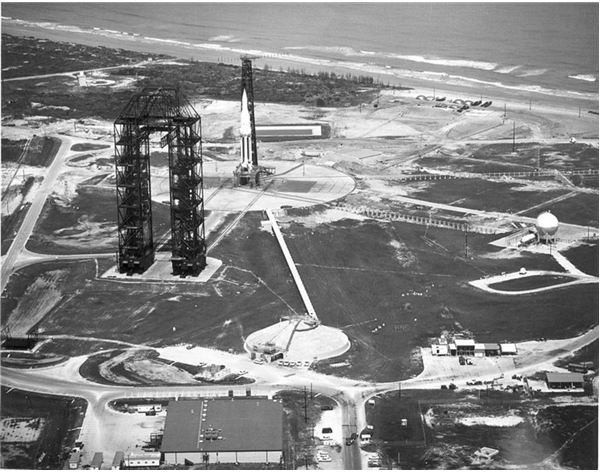
The big S-IV stage was about 40 feet long and 18 feet in diameter. It was powered by six Centaur RL-10 engines, each producing 15,000 pounds of thrust.
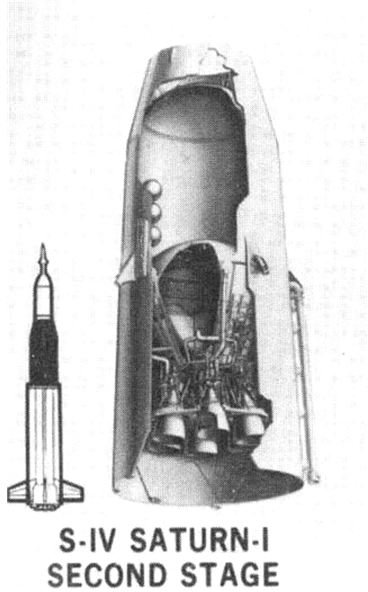
In the original design, a Centaur was to be a third stage for satellite launches, but this configuration was never flown as the lunar program proceeded so quickly and budget cuts hit the Saturn program.
Testing the Design
The first Saturn 1, SA-1, flew on Oct. 27, 1961 with dummy upper stages filled with water for ballast. It was, in NASA terms, nominal.
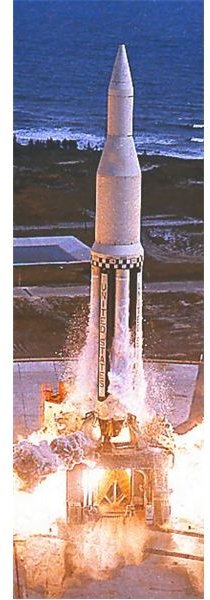
Three more test flights were made with dummy upper stages. With SA-2 and SA-3, the dummies were exploded just after engine shutdown to determine how a cloud of water would react in the upper atmosphere. They produced a 4.6 mile wide cloud of ice crystals visible for 12 seconds.
SA-5 flew with the S-IV stage for the first time. With the live upper stage, fins were added to the booster. Five more Saturn 1 test flights were made, two with dummy Apollo craft and three with Pegasus micrometeorite satellites.
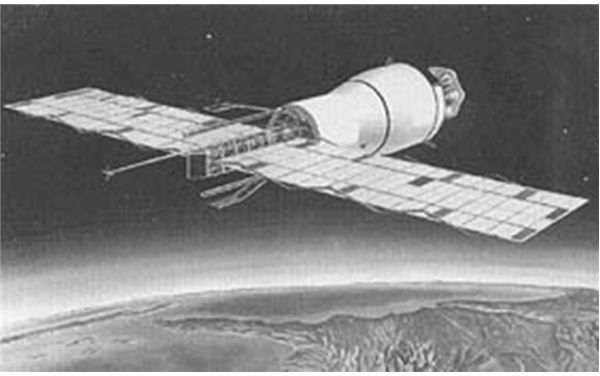
Then a redesigned Saturn took over—the Saturn-1B. This was the vehicle that would test Apollo in Earth orbit. It was lighter, the H-1 engines were upgraded to 200,000 lbs thrust and the second stage, now designated the S-IVB, was enlarged to 22 feet in diameter. It also had a new engine—the J-2—producing 200,000 lbs of thrust. One J-2 would replace the six RL-10s, a much more reliable configuration.
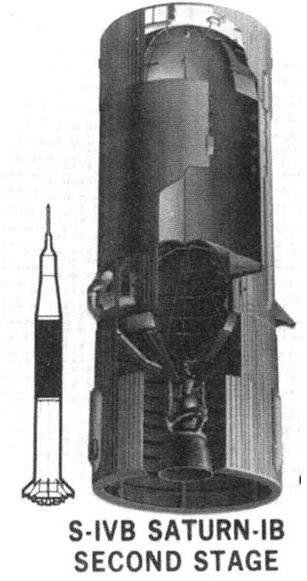
The first two 1B flights were suborbital to test the Apollo heat shield on reentry. They were completely successful.
SA-203 put an unmanned Apollo into orbit. The Apollo Service Module engine was fired twice and after four orbits reentry was successful.
It was time for man to fly in Apollo.
Testing the Design
SA 204 (it is now called Apollo 1 but at the time the flights were designated Saturn Apollo 20x) was readied on Launch Complex 34 (LC-34) on Jan. 27, 1967. Astronauts Gus Grissom, Ed White and Roger Chaffe climbed into the Apollo for a dress rehearsal. They were performing their checklists when a flash fire broke out in an instrument panel in the spacecraft. In the pure oxygen atmosphere of the craft it spread in a flash. Pad crew tried valiantly to open the hatch and get the astronauts out, some suffering severe burns on their hands.But the fire spread too rapidly. By the time the hatch was opened, the astronauts were dead. It was the first loss of an astronaut’s life in the short history of the space program, and would remain so until Challenger.
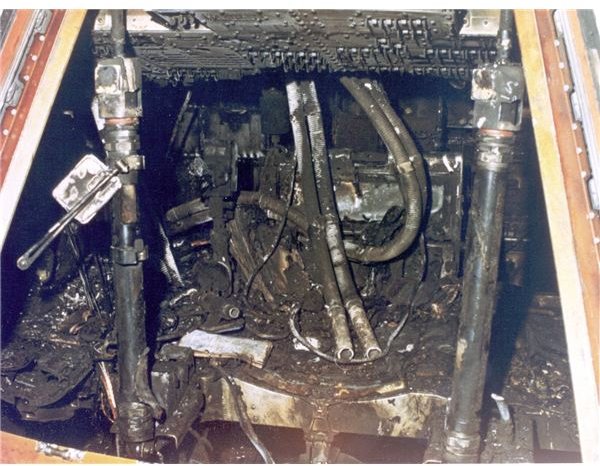
The Apollo program was put on hold while a major redesign of the crew capsule was undertaken. The pure oxygen atmosphere was replaced with an O2/nitrogen mixture, similar to the atmosphere on Earth.
Meanwhile, the 204 vehicle, a year later, boosted the first LEM into orbit for a test of its descent and ascent engines. They worked perfectly. Later, SA-205 boosted the first manned Apollo—Apollo 7—into orbit on an 11 day check out mission.
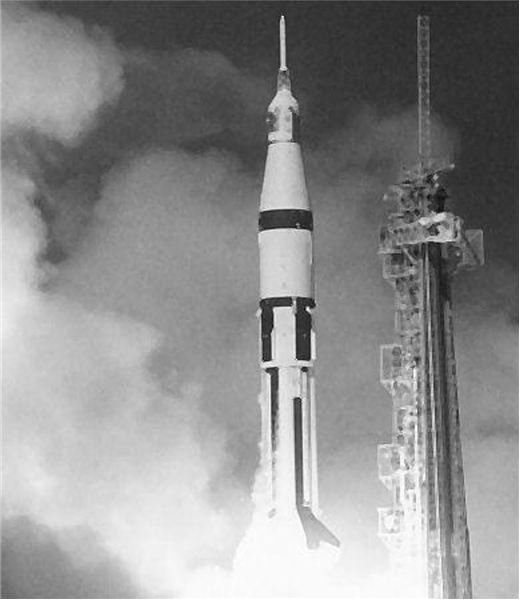
The hiatus in the program allowed the von Braun team to complete development of the huge rocket that would send men to the moon—the Saturn V. The Saturn 1B would still have work to do, but after the lunar program was over.
Credits
S-IV/S-IVB cutaways: NASA https://history.nasa.gov/SP-4206/p161.htm
Engine configuration, LC-34, Pegasus: NASA https://www.hq.nasa.gov/pao/History/SP-4206/
All Saturn images: NASA https://www.grc.nasa.gov/WWW/K-12/rocket/gallery/saturn/saturn1.html
Apollo 1 fire: NASA https://grin.hq.nasa.gov/ABSTRACTS/GPN-2000-001834.html
This post is part of the series: The Apollo Program
President John Kennedy gave this country the goal of sending a man to the moon by the end of the 1960s. The result was the Apollo program, which created a new series of spacecraft, launch vehicles, and even ground support equipment.
